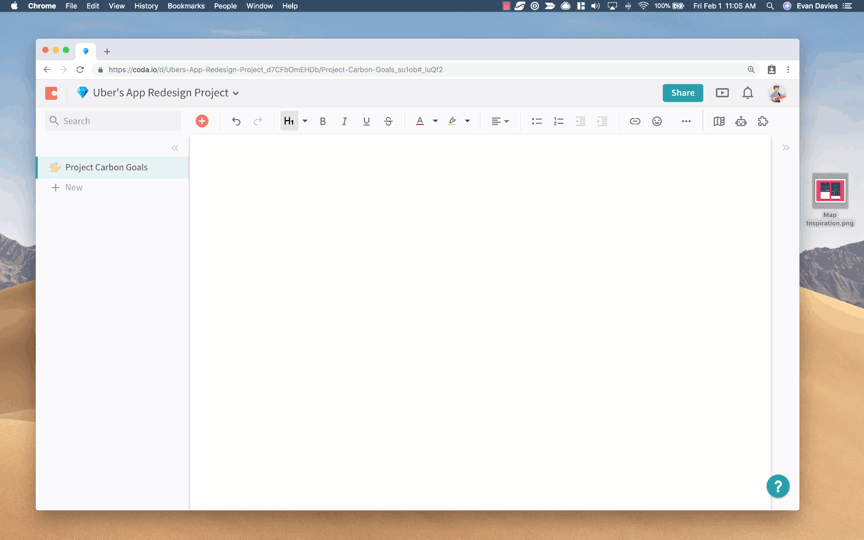
 Introducing Coda 1.0
Introducing Coda 1.0
Introducing Coda 1.0
Today we’re welcoming everyone into Codaーand it comes with a new mobile experience. Now everyone can make a doc as powerful as an app.
This link can't be embedded.
Meet Coda 1.0
A new doc: A unified workspace.
A new table: A flexible database to track anything.
A new app: Made by you, for your unique needs.
Mobile: Completing the doc-to-app journey
— that makes your doc not just act like an app but feel like an app. We think this is a true testament of modular design: when you pull up a Coda doc up on your phone, the building blocks automatically transform to feel like a native app. Sections in your doc become the bottom tabs. Tables and buttons adjust to fit your screen. And the notifications you set up in your doc push to your phone. It’s like having a team of mobile designers build a custom app based on your favorite doc.A doc for makers.
Want to print your doc?
This is not the way.
This is not the way.

Try clicking the ⋯ next to your doc name or using a keyboard shortcut (
CtrlP
) instead.